INMOMENT ANSWERS
Every month, major food-service companies receive tens of thousands of customer feedback responses from across the world. A significant amount that feedback needs to be handled by at a macro (rather than local) level. This is the story how we drastically reduced time it takes corporations to arrive at actionable insights from all that raw data.
To comply with my confidentiality agreement I have omitted and modified confidential information. These designs are a reinterpretation of the original.

INTRO
My Role
I led the research & design of the Answers module of the Focus enterprise responsive web app from the outset in October 2014. I took the team through research, journey mapping, vision boards, IA diagrams, executive presentations, and countless sketch, wireframe, and hi-res design interactions.
In January of 2015, the product manager with whom I had been working closely was let go, so I also stepped up and filled the role of interim product manager through April 2016 when my research skills were needed on another project.
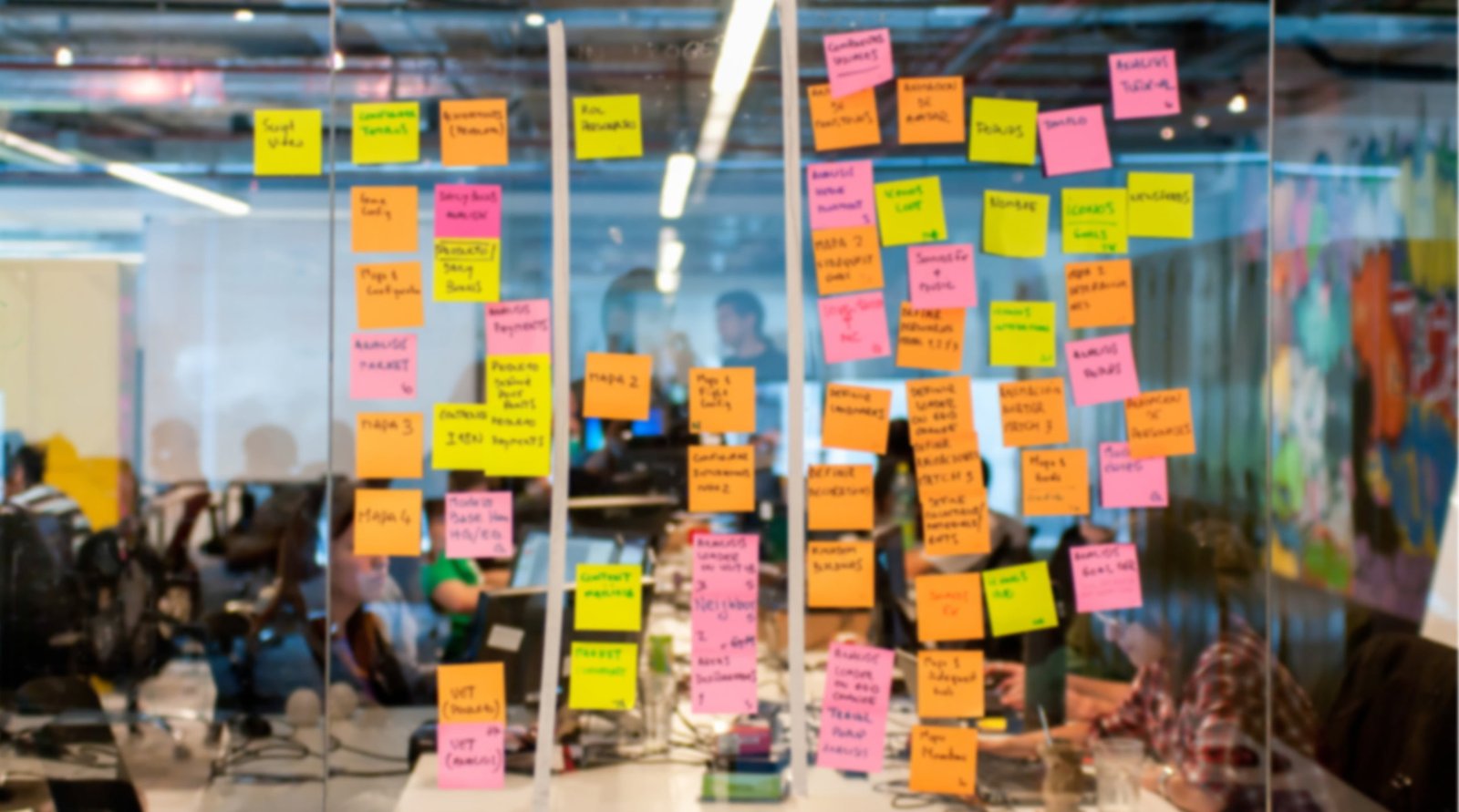
Customer Insights & Problem Solving
I partnered with another designer, a product manager, and a couple client advisors to identify and prioritize pain points. Including the client advisors in research planning proved very useful, not only in this project but also in enabling future user research with their clients.
Product Strategy & Planning
I employed vision boards, product roadmaps, and high-level user flows based on the research to flush out details, get team alignment, and executive buyoff. This proved useful not only to identify the problem we were solving but also which customer vertical we were going to focus on initially and how this would achieve the business goals both now and in future releases.
User Research Evangelization
Through collaborating with my client advisor partners, and planning/executing user research quickly, I demonstrated the immense value of spending the time to gather user pain points. This helped inform the prioritization process and solidified a shared vision across the team of what we were building initially.
Design Execution & Validation
I quickly iterated on multiple versions of designs soliciting feedback all along the way. I executed journey maps, sketches, wireframes, and prototypes to explore, identify, diverge, validate, decide and ultimately communicate what needed to be built.
Product Management & Leadership
In January of 2015, the product manager on the team was let go as part of a decision to co-locate all product/design to the corporate headquarters. During this time I took over as interim product manager and helped run the scrum team, manage road maps, and general executive expectation management.
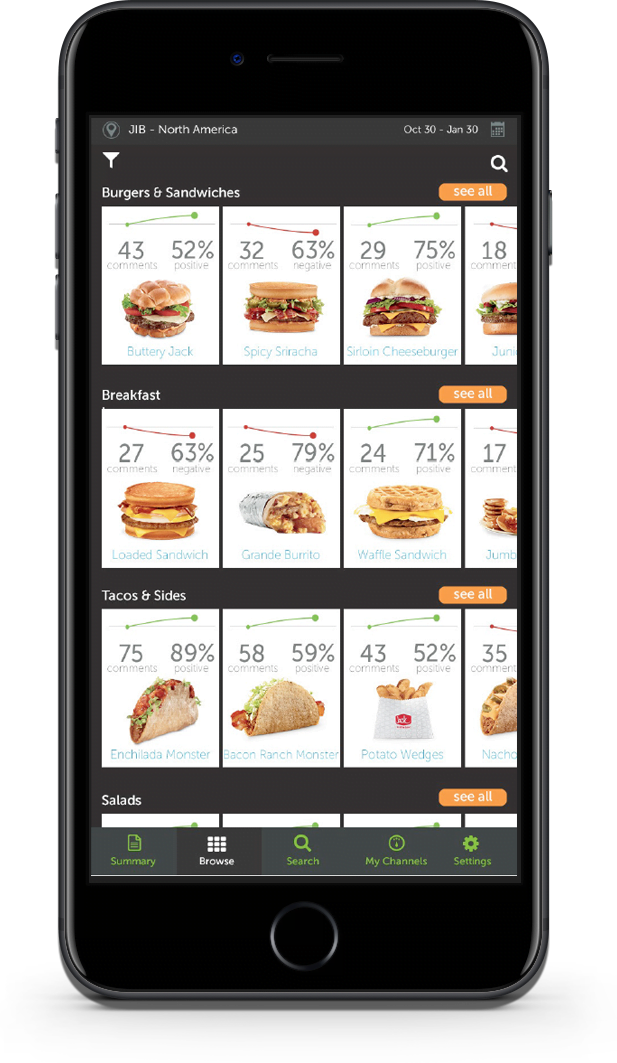
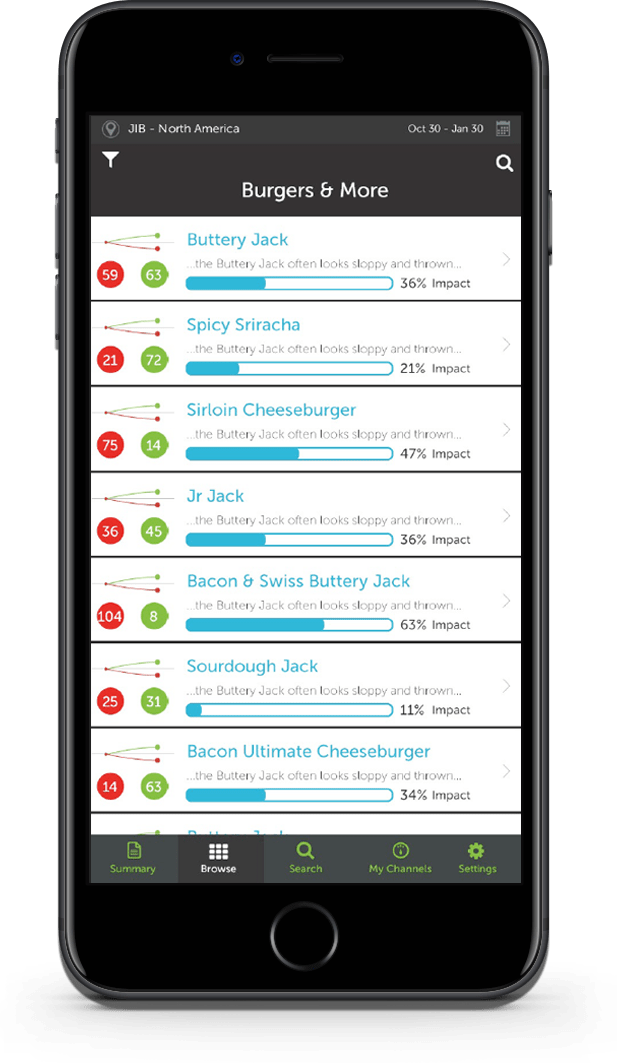

THE CHALLENGE
Eliminate Frustration at the Highest Levels
Since its inception, InMoment has differentiated itself through surfacing the stories its clients local customers are having and allowing store managers to react to and improve that experience.
Our challenge was to expand that level of feedback and insight at the highest level. Corporate Customer Experience Managers had been employing entire teams who painfully searched through thousands of comments, survey results, and tags for a week at a time to try to find trends.
This frustration resulted in a ever-decreasing perceived value of our platform to the main persona that was responsible for purchasing our services. The direction from the board and executive team was to increase retention and sales by:
clock
Save Time
Decreasing the time it takes for corporate-level managers dealing with huge amounts of data to find actionable insights
expand
Expand Footprint
Expanding the usage footprint within client organizations through an appeal to additional departments (such as marketing & sales)
light_bulb
Create Experts
Eliminating awkward situations for client Program Managers by helping them look like the CX Experts to their senior executives
THE APPROACH
Prioritization Through Research
We knew from our sales reps and client advisors that there were many large pain points for Corporate Program Manager persona. As we had limited resources and many unique client verticals, we chose to focus our approach on getting to know our program managers. Since a key characteristic of the target user is someone who is managing immense amounts of data, we chose to scope our interviews to client organizations with 250 locations (users) or more.
Our approach was very collaborative and we utilized the double-diamond approach to Discover, Define, Explore, and Validate our solution.

Research Barriers
We had some hurdles to overcome with the broader team concerning the user research the PM and I knew needed to happen to really achieve our goals. There were concerns from some team members in spending part of our limited time interviewing, and also there was some hesitation on the part of key client advisors to allow UX access to their customers considering how high profile the clients in question were. There had been some negative experiences in the past with designers inexperienced with research, and some negative stigmas had been established.
Transparency Builds Trust
To over come this, we involved the client advisors and other key stake-holders in the research planning process. Together we came up with a list of questions in 4 key areas: Background, Behavioral, Short Term Goals, and Long-term Goals. Through providing transparency into what we were going to be discussing and how it was to be presented, we were able to overcome some of the political barriers that had previously inhibited contact with customers for research. This proved useful both on this and subsequent projects as we gained trust.
Shared Understanding
It was very important to us along the process to have a shared understanding and vision. To achieve this, we ensured that members of each functional area of the team were involved in each step of the process (research, debrief, design, implementation, etc). It helped focus our work and ensure each team member had a clear understanding of the target user and what problem we were trying to solve for them.
Fast, Iterative Design
By sketching multiple solutions on an iPad we were able to come up with multiple potential solutions and iterate quickly through the high-level ideas before picking a direction to head in. This proved a wise choice as two executive stakeholders vascillated for quite some time between different solutions before approving one.
THE DISCOVERY
Who is a 'Program Owner' Anyway?
The company had long established a 'Program Owner' persona identifying the kind of user we were targeting for Answers. However, the personas were old and based on executive assumptions so we felt it was important to validate assumptions of who this person is.
Due to a limited timeline, one other principal focus of our research was to prioritize pain points we already knew existed and discover any pain points we might have missed in our initial stakeholder interviews.

Research Learnings
After interviewing 10 program managers, it was clear that our assumption of the tasks and characteristics of a ``program owner`` were outdated and based on smaller client organizations than we were currently dealing with. The decision maker for all Voice of Customer software matters and the person actually using the software and managing the program were 2 different people. We kept the ``program owner`` persona, but we identified a new persona we labeled as ``program manager``.
One other key finding that was a bit surprising was that although the majority of interviewees agreed that surfacing key insights out of the thousands of surveys to them automatically was more useful overall, they nearly unanimously agreed that the more urgent need in the short term was to ``get my boss off my back``. They wanted a solution to allow them to quickly find actionable insights on a known problem. (I.E. if their boss comes to them and says 'sales are down 25% on the Big Mac, what reasons do our user feedback give us to explain the change?').
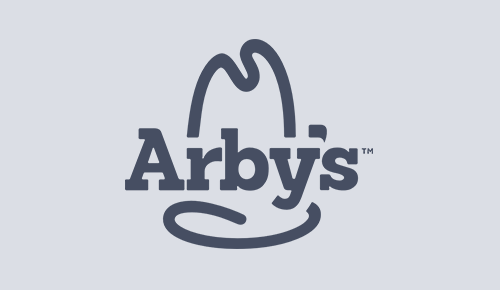
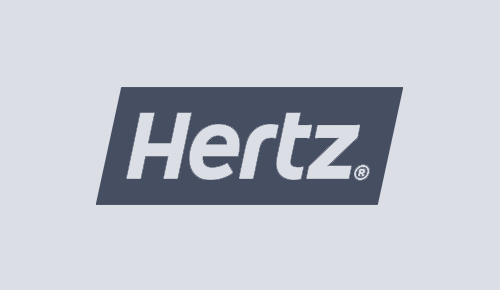
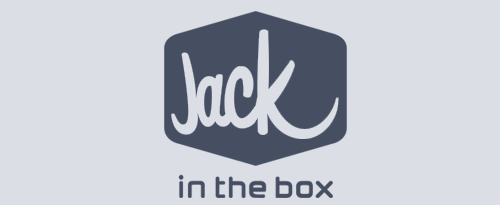
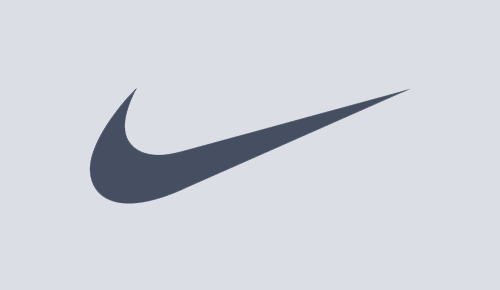
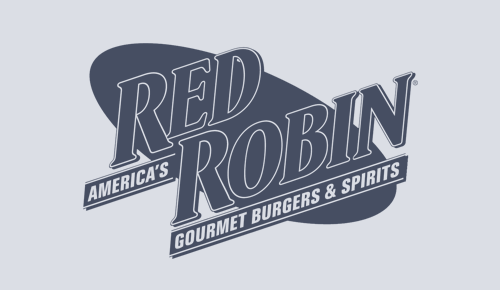

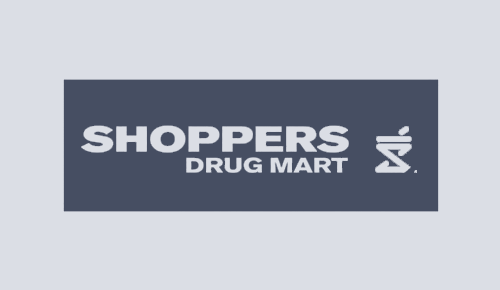

Shopping or Food?
It quickly became apparent to me as we spoke with our internal Client Advisor Directors over different verticals and tried to define requirements that the needs were unique enough that trying to solve the problem for program managers across verticals was not going to create an innovative product. The trick was to convince Senior Management that the increased revenue/retention from being able to produce an innovative product for a subset of our customer base would be able to compensate for being able to sell to all customers but only being able to half-way solve everyone's pain points. It was a difficult sell, but ultimately I was successful through the use of direct quotes from some of our largest clients. Had I not done research, this would have been impossible and we would have built a mediocre product.
Ultimately we chose our Food Service vertical over Retail or Call Center because it made up the largest portion of our revenue. It was determined that if we could eliminate retention issues and expand our footprint in those organizations, that would impact our business in the greatest possible way. Also, by building a product-oriented solution (which wouldn't have been feasible in retail due to the number and variability of their products), we were able to hit our goal of expanding into other departments (such as marketing) within client organizations.
THE VISION
Big Data Food Service Answers
While our competitors focused on rolling up scores and metrics to show the current state of the customer experience, it was our vision to show WHY and simplify discovery of how to fix the problems (and repeat the successes). To narrow our focus, increase innovation, and optimize time to market we decided to focus on a product-based approach for our Food Service vertical.
It needed to be easy usable, be able to take into account what TYPE of insights were valuable to individual clients, and allow users to find insights in minutes instead of hours. Innovation was a major focus and the visual design needed to be excellent as a major target group were marketing departments.
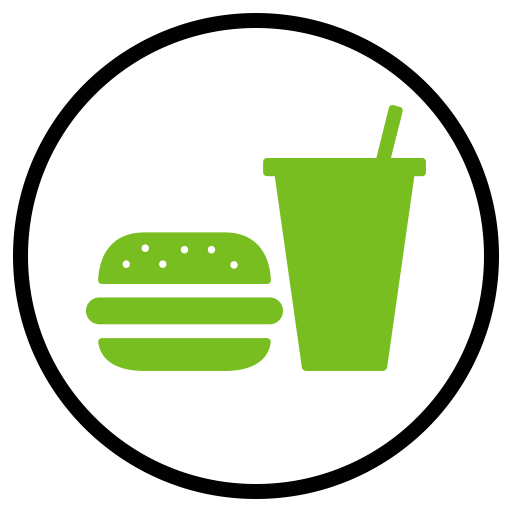
Product Oriented

Recurring Insight

Easily Shareable

Geographical Trend
DESIGN JOURNEY
Setting the Design Direction
As there were so many stakeholders intimately involved in the design details, we took a very lean approach to define the overall design structure. I utilized sketching, storyboarding, and paper prototyping to generate & validate multiple ideas quickly. At this point, there was still some diverging opinions as to the scope of our target audience. Quickly entertaining various ideas allowed us to be confident in our decision to scope down our initial release.
It needed to be easy usable, be able to take into account what TYPE of insights were valuable to individual clients, and allow users to find insights in minutes instead of hours. Innovation was a major focus and the visual design needed to be excellent as a major target group were marketing departments.

Technical Feasibility
Throughout the process we worked closely with the dev team leads (and the CTO who was in many of our meetings) to help prioritize the road map and ensure what we were designing was both usable, provided business value, and could be built within the time frame assigned us by our CEO. We pivoted in our designs more than once as a result of technical feedback.
Early Usability Testing
From the sketches that represented our latest thinking, we chose to develop low fidelity clickable prototypes from which to conduct early usability testing. We took care in our test plan to ensure during the test we collected qualitative and quantitative data across the 3 main parts of usability.

Data Logging
We utilized data logging in our note-taking during usability testing to ensure that our results would be easily aggregatable and summarizable. This proved very beneficial, although it could have been more beneficial had we been able to get more members of the team to observe the sessions.
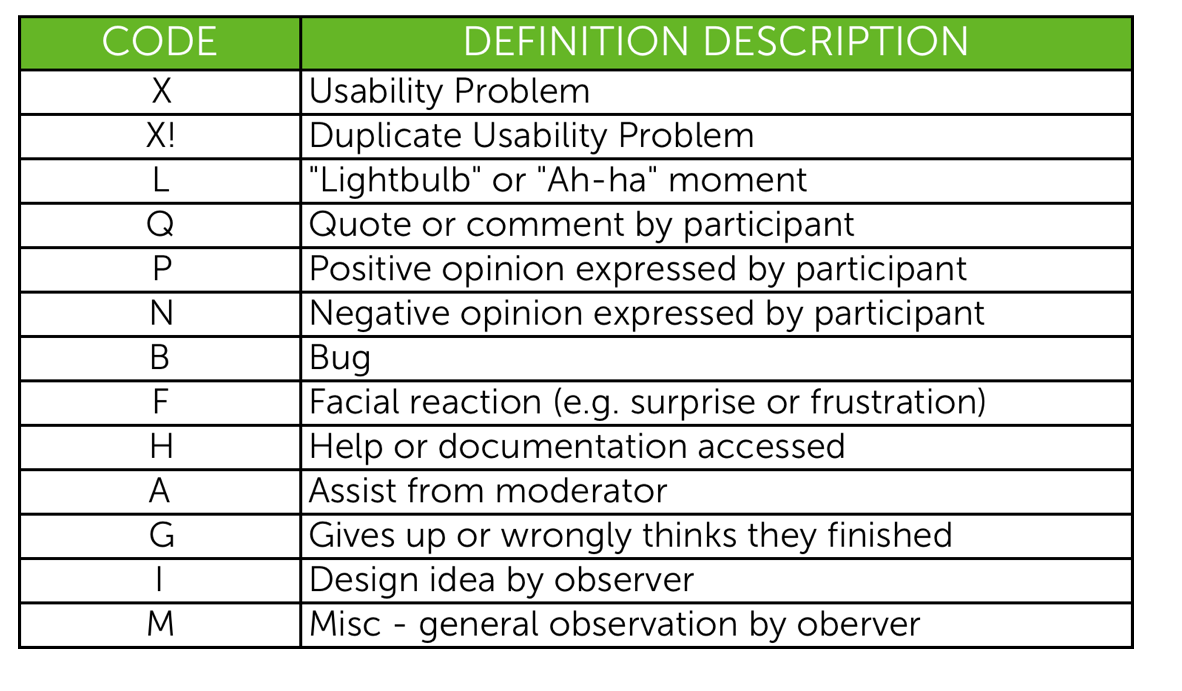

Detailed Design
After iterating more in low fidelity following the usability testing, we opted to move into high res mockups and from there functional prototypes. Mockups were done in Photoshop and Prototypes in JustinMind. In hindsight, that was unwise and cost us time we could have better used for additional final client validation. If I had it to do over, I would have done the mockups and prototypes in the same tool or done just enough in Photoshop to develop a pattern library and then designed in the browser (HTML/CSS) from there.

REFLECTIONS
Test Early
Due to the high profile stake holders I was working with (4 of the 5 members of the C-suite were in our meetings and collaboration sessions on a regular basis) we turned to them for decisions and waited too long to gather usability feedback from clients. This caused us to waste a significant amount of time debating the ideal, instead of discovering what the ideal was with users. Similarly, due to the passion exhibited by some high-profile team members, I made some assumptions that proved to be false (such as a hard-fixed deadline). More transparent definition of requirements at the beginning would have helped.
Overall, though I felt we did a great job at learning who our target user was, understanding their preferred prioritization of their pain points (which were different than our assumptions), iterating through various solutions, and improving our clients' lives.
I am especially proud of how much our efforts in pushing the ball forward on user research yielded. This project was a turning point. It was after this project that the executive team started asking for reports on how often we were visiting with users and held us accountable for it. The sales team even started using ``we involve our customers in the product design process`` as a selling point to acquire new clients!
CONNECT WITH ME:
© Copyright 2017 Jeremy Bird Design - All rights reserved.